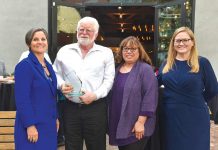Name , characteristics:
Softly pendulous foliage is the only similarity that Australian
willow, Geijera parviflora, has with true willows. Unlike the
delicate deciduous foliage of willows, the narrow, four- or
five-inch-long leaves of Australian willow are evergreen and a bit
tougher. The roots of Australian willow are about as complaisant as
the roots of real willows are aggressive.
Name , characteristics:
Softly pendulous foliage is the only similarity that Australian willow, Geijera parviflora, has with true willows. Unlike the delicate deciduous foliage of willows, the narrow, four- or five-inch-long leaves of Australian willow are evergreen and a bit tougher. The roots of Australian willow are about as complaisant as the roots of real willows are aggressive.
The Australian willow, which is also known as “wilga,” grows to about 20 feet tall and wide. Mature trees bloom with clusters of tiny, greenish flowers in early spring and early autumn.
Where to plant:
Australian willow is an ideal street tree. It is proportionate to small gardens, and is particularly useful where planting area is limited by pavement or other features that might be displaced by roots of other types of trees.
It is also a good choice where shade from typical shade trees would be too dark.
How to care for:
Australian willows are not demanding. They do not like the generous irrigation that true willows crave; and can be quite happy with only occasional watering once established.
Pruning is only necessary if limbs become obtrusive to adjacent garden features or buildings, or if a higher canopy is preferred.
Where to purchase:
Most nurseries and garden centers that have a good selection of shade trees should have Australian willow, or can easily order it.
Because stock changes frequently, and regularly available trees are sometimes displaced by seasonal plants, telephoning to confirm availability might be a good idea before the trip to the nursery.
Tony Tomeo is a consulting horticulturist and arborist for New Image Landscape of Fremont. His weekly radio broadcast, “New Image Garden Report,” can be heard at 8:10am on Friday mornings on KSCO, 1080 AM of Santa Cruz. Tony can be reached at (888) 226-9191 or tt****@***************pe.com.











